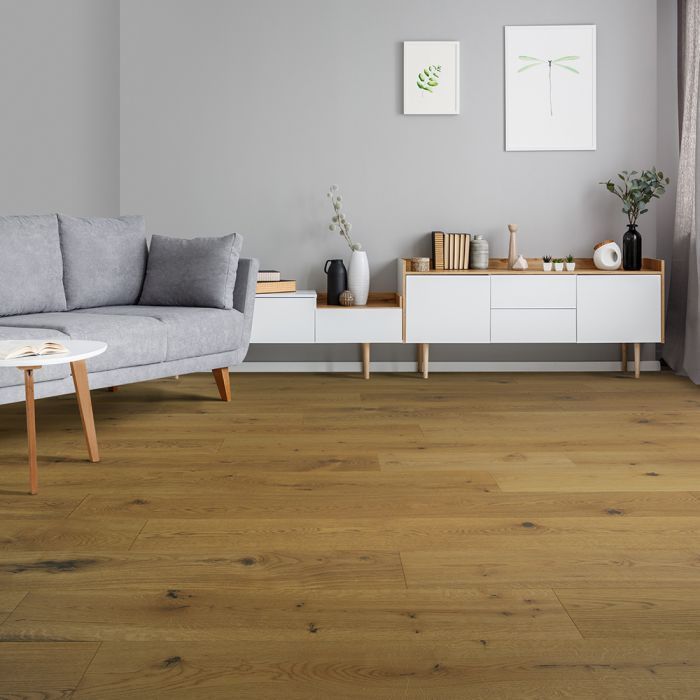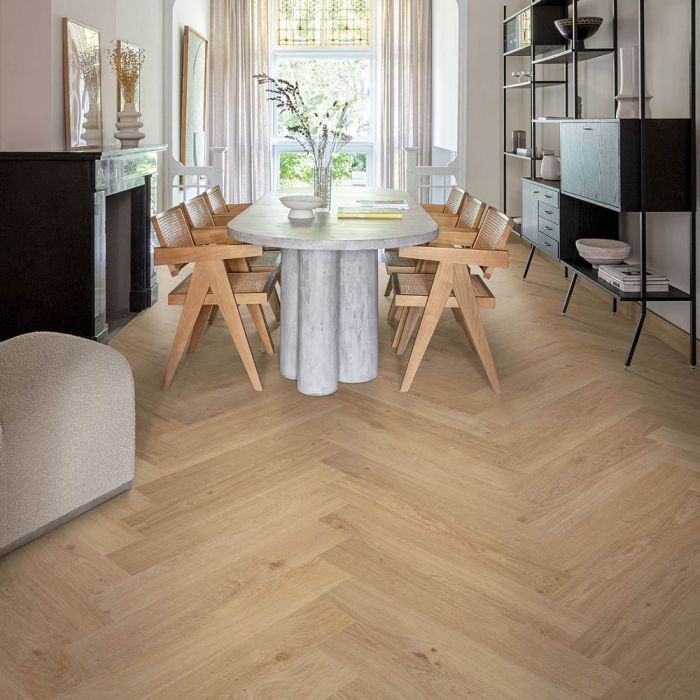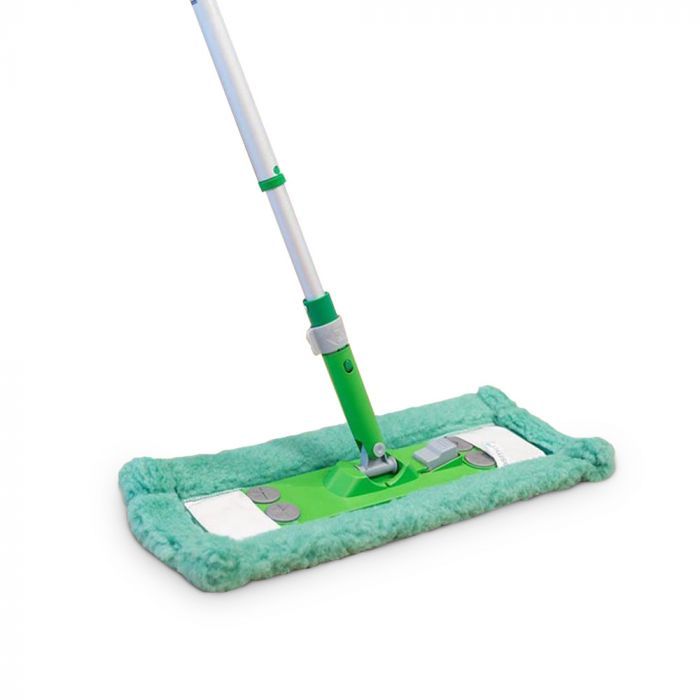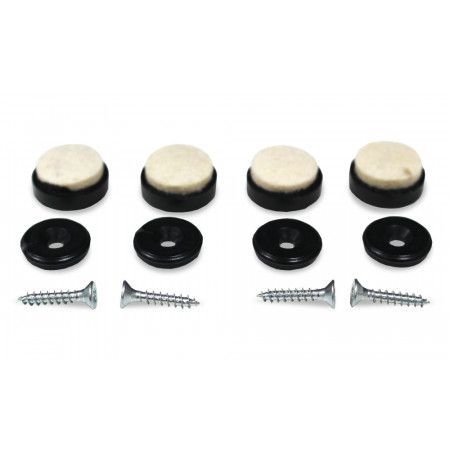When you are thinking about having a new wooden floor you may be worried about installing it. We always recommend that you use a professional floor fitter for the job, but you may find the following tips for installing wood flooring useful:
1. Choose your wooden floor carefully
There are many different types of hardwood flooring so make sure you choose the correct one for you. Hardwood flooring comes in a variety of different grain patterns, species of wood, plank sizes and surface finishes. All of these will be important to you as you will want the floor to fit in perfectly with your space. It is important that you also think about whether you want solid hardwood or engineered hardwood. Depending on how you want to lay the floor may make this decision for you. If you have underfloor heating or want to float your floor over an underlay then you will need to select an engineered hardwood. Sometimes the subfloor will also determine the type or thickness of the flooring. For example, if you have joists, you wooden flooring must be at least 18mm thick. Why not have a look at Fitting wood flooring onto different subfloors for further information. Another thing to think about when installing wood flooring is ‘how busy is the area?’ Some species of wood are more hardwearing than others. If you have a busy hallway or living space then something durable like Oak might suit you. Alternatively, for a quieter room, you could choose a more delicate wood, like Walnut.
2. Acclimatise your wood floor
As soon as your hardwood flooring has been delivered to your property, it is important to let it acclimatise sufficiently. Acclimatising means to allow the flooring to adapt to its new surroundings. Hardwood is a natural product and will inevitably expand and contract with changes in heat and humidity. By letting you hardwood flooring acclimatising to your home, you are reducing the risk of damage to the wood once installed. Here are some simple steps to follow to make sure you acclimatise your floor properly:
• Make sure your floor is delivered in plenty of time before the installation starts.
• Put the hardwood flooring, still in its packaging, in the room where it is going to be installed.
• The room should be thoroughly dry. The hardwood should not be left on a damp floor or in an area with wet plaster on the walls.
• Make sure you do not leave the wooden flooring directly next to a heater or radiator.
• Leave solid wood flooring to acclimatise for at least 7 days.
• Leave engineered wood flooring to acclimatise for at least 72 hours.

3. Prepare your subfloor ready for installation
It is really important that you properly prepare your subfloor before installation. If it has not been done correctly, it can cause your flooring to become damaged. The most important things to check are whether your subfloor is flat, level, clean and dry.
• Use a spirit level to ensure that your subfloor is flat and level. If it is not then you will need to either line your subfloor with plywood (for a wooden subfloor), or use a self-levelling compound (for a concrete subfloor).
• Check the Moisture Content (MC) of your subfloor using a Moisture Meter. A wooden subfloor should be 16%MC or below. A concrete subfloor should be below 6%MC. If your subfloor is not dry enough you should allow it more time to dry out naturally.
• Your subfloor needs to be clean. Remove any old chemicals or adhesives that may still stuck to the subfloor and then sweep away dust and dirt.
There will be more in depth information about preparing your subfloor in the hardwood flooring instructions.

4. Read the wood floor fitting instructions
You will get detailed instructions with your hardwood flooring. It is extremely important that you read and understand them. They cover everything you need to know from getting your room ready to actually fitting the floor. If you do have any questions or need further advice, then please contact us.
5. Make sure you have the correct equipment
Having the right equipment is always advisable when starting any task. Have a think about what you, or your fitter, may need to help you to install your hardwood floor. If you are floating your floor then you may require underlay. If you have tongue and groove flooring then it is likely that you will need WPVA glue for the joints. And, if you are fixing your floor down, do you need glue or nails?

6. Install your wood floor in the correct direction
The direction you choose to lay your wooden flooring is entirely up to you. It might be worth thinking about how you want the room to look though. Most people lay their floor lengthways according to the path of light coming from a window or door. This helps to highlight the natural beauty of you flooring as the light falls on the grain pattern. You may also want to consider the shape and size of the room. If you have a smaller room, installing wood flooring along the length can make the room look bigger. One rule that you must follow, if you are nailing the floor to existing floorboards, is to fit the flooring perpendicular to the floorboards. This will help to give strength to the flooring and keep everything stable.
7. Leave an expansion gap
When you are fitting any type of wooden flooring, you must leave an expansion gap. This gap should run the whole way around the edge of the room, including in doorways, pipework and fireplaces. The expansion gap needs to be at least 10mm. The reason you need to do this is to give your hardwood flooring space to expand and contract with changes in temperature and humidity. If you fail to leave an expansion gap your flooring will have no space to expand and can easily become damaged. Have a read of the following for more information: What is an expansion gap? There is no need to be concerned about how the expansion gap will look once your floor has been fitted. It will be covered over with flooring accessories like beading, skirting, door strips and pipe covers.

8. Install your wooden floor
Installing wood flooring depends upon a number of things: which type of flooring you have chosen and what subfloor you have. There are many different options from floating over an underlay, gluing down, secret nailing or secret screwing. Just make sure your installation method is correct for your home and the particular flooring you have purchased. All of our hardwood floors come with detailed fitting instructions. It is extremely important that you read these carefully before installing your floor. The instructions are there to help you to get the best possible results from your new wooden floor. If there is anything you are unsure of, or you would like further advice, please contact us.
9. Add any finishing touches to the floor
When you have finished installing wood flooring, you will, no doubt, need some flooring accessories to add the finishing touches to the room. As already mentioned, you will have expansion gaps around the edge of your room. These can easily be covered over with a range of flooring accessories like: skirting board, beading (quarter round), door bars, ramps and pipe covers.
10. Clean and look after your new wood flooring
Cleaning and looking after your new hardwood floor is something that you will want to do to keep it looking its best. Cleaning any type of wooden floor is simple. Start by sweeping (on a daily basis). This will remove any dust and dirt. Then, at least once a week you should clean your floor with a wooden floor cleaning spray and mop. This will keep you floor looking shiny and new. You can also take a few small steps to prevent damage to your new floor. Remember to remove outdoor footwear before walking on your floor. Wipe away spills on your floor immediately. It is also advisable to apply felt protector pads to the bottom of furniture or heavy items.
For more detailed advice and looking after and cleaning your hardwood floor, have a look at our Hardwood Flooring Maintenance and Care Guide.






